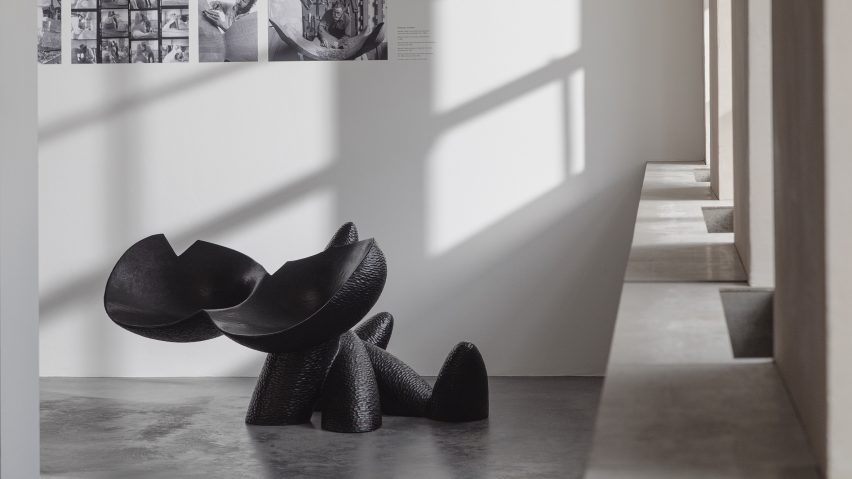
Wendell Castle's stack-laminated furniture goes on display at Carpenters Workshop Gallery
The late works of American artist and designer Wendell Castle have gone on display at the Carpenters Workshop Gallery in London, showing the evolution of his signature stack-lamination technique.
Castle, who passed away in 2018 at the age of 85, is known as one of the pioneers of American art furniture, combining his training in both industrial design and sculpture to make one-off functional pieces.
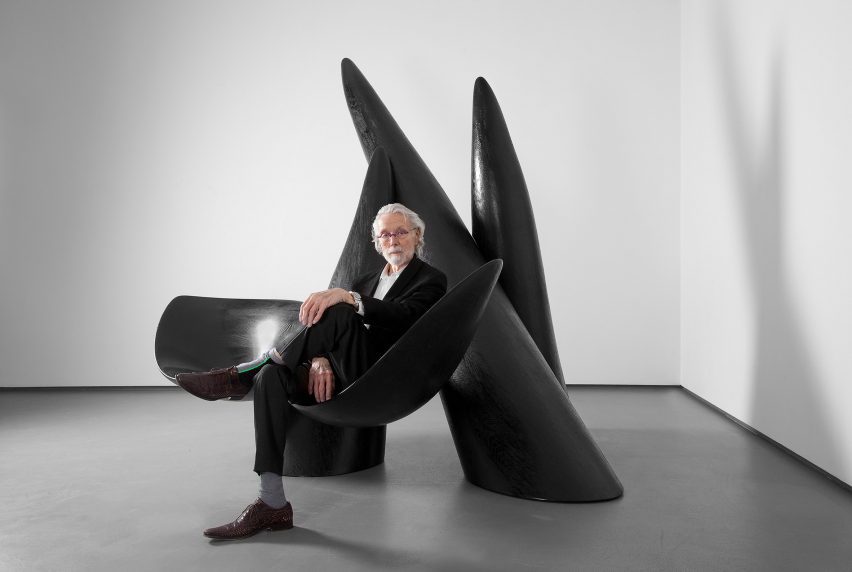
The Carpenters Workshop Gallery solo exhibition Suspended Disbelief displays works the designer created between 2011 and 2015.
The period saw Castle return to the biomorphic style and stack-lamination technique that had characterised his most famous works of the 1960s and 70s, augmented with new ideas and technologies.
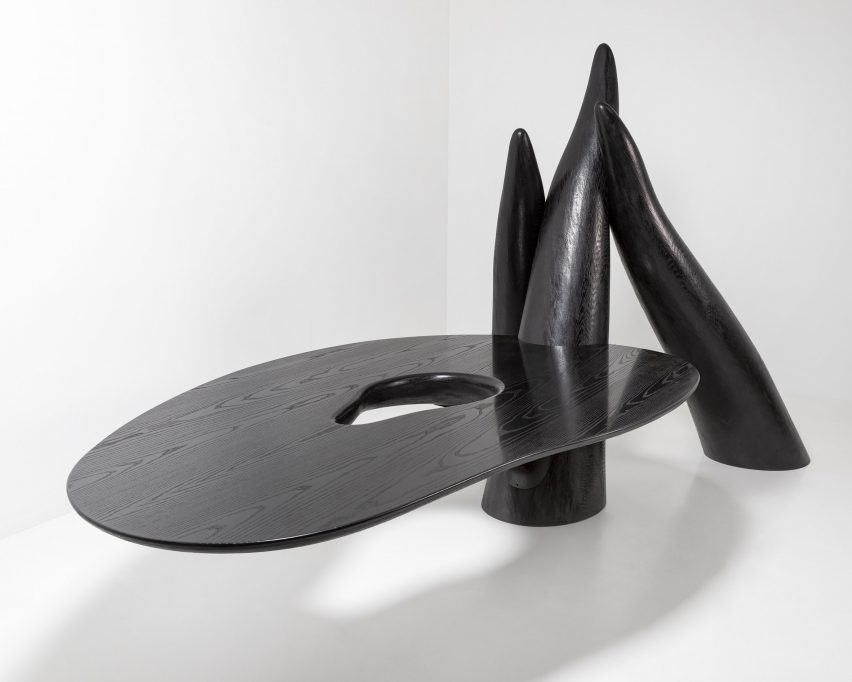
Stack lamination involves glueing planks of wood together to make a large block, which Castle would then carve into. The artist built the blocks with an idea of the work he was going to carve in mind, so he could build up the approximate shape in cross sections.
With his later series of works, he added another element: digital technologies such as 3D modelling, scanning and laser cutting. These allowed him to achieve ever more elaborate creations because he could obtain accurate cross-sections of 3D models in a way that he couldn't from 2D drawings, and cut them equally precisely.
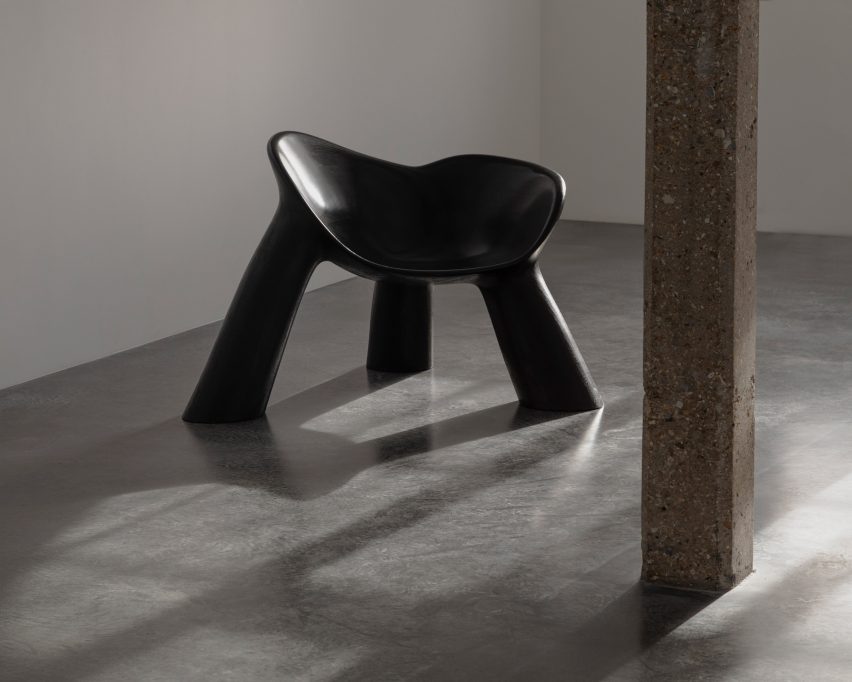
"Scale and form could be pushed even further and with more complexity than ever before, resulting in the spectacular, large-scale works on show in the exhibition," Carpenters Workshop Gallery co-founder Loïc Le Gaillard told Dezeen.
The works on show as part of Suspended Disbelief are elongated and multi-limbed, sometimes monumental. They emerge from the floor like creatures from the bowels of the earth.
Stained in a black finish, the organic forms have an enigmatic appearance and push the boundaries of what we understand as timber.
Works made in steel, bronze and nickel are also on display. But laminated wood is the material he most often returned to, appreciating the way it allowed him to sculpt complex forms while ensuring structural integrity.
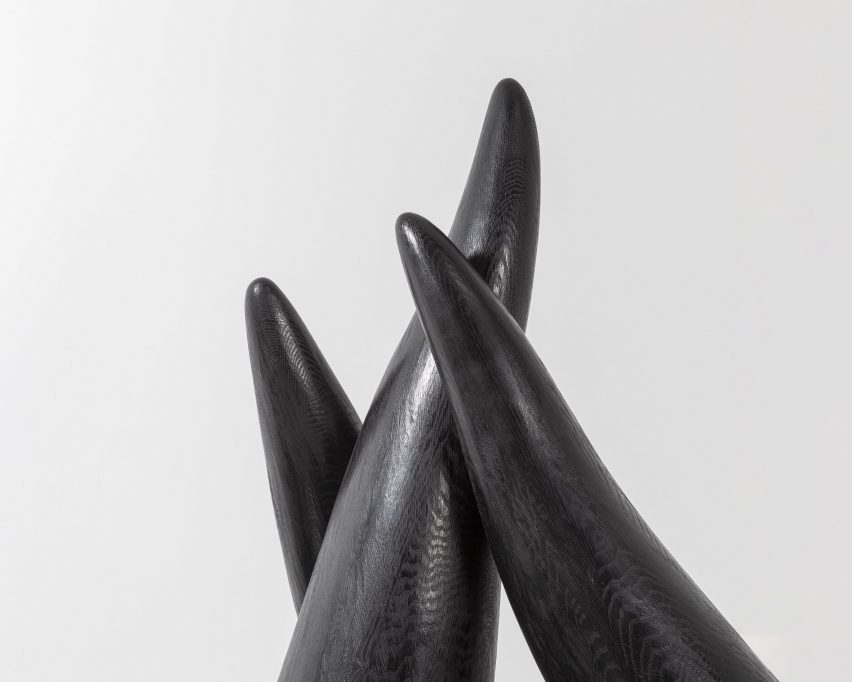
Castle explained that digital tools had allowed him unprecedented freedom in a video filmed by his daughter Alison Castle and gallery Friedman Benda before his death.
"Even though you think that you're not designing with your abilities very much in mind, you are," he said.
"Something just keeps you from designing things that you just could not possibly make, or you couldn't possibly make in any reasonable way. You can kind of throw that out the window now."
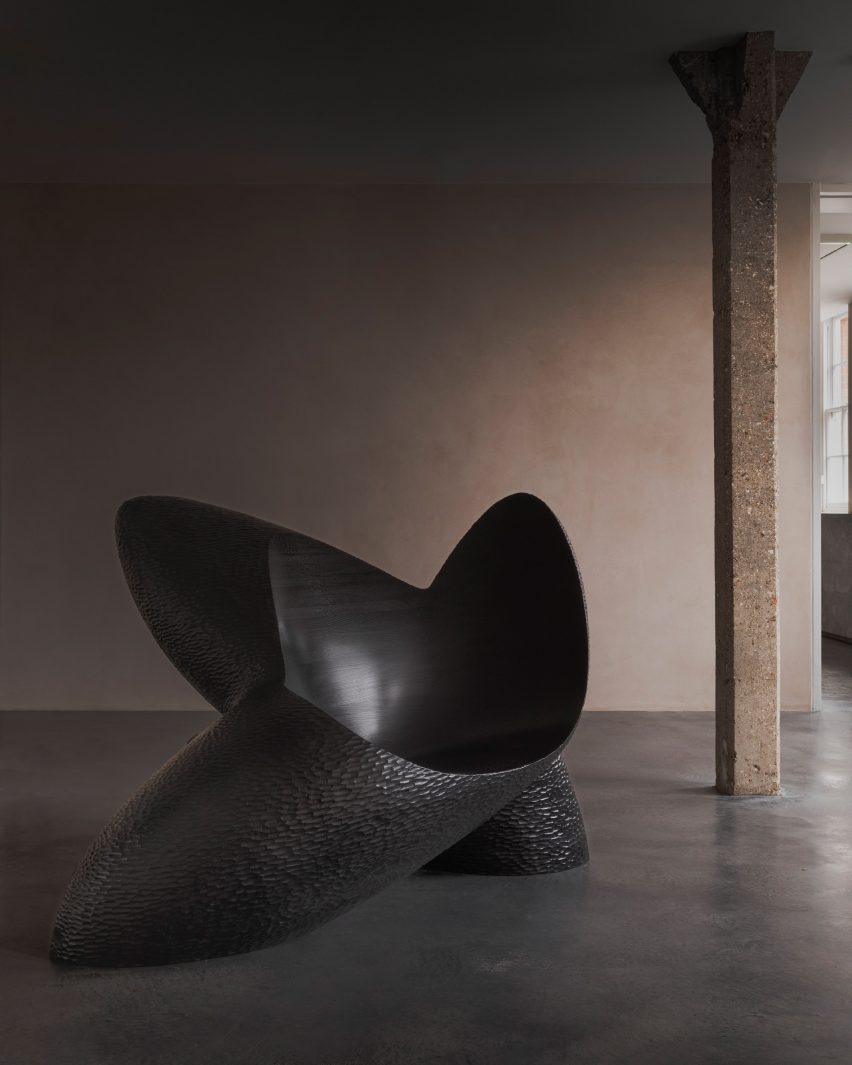
Carpenters Workshop Gallery has exhibited Castle's work since the early 2000s – including solo shows in both London and Paris – and has continued to work with the artist's estate since his death.
Le Gaillard said that it had been "a dream come true and a humbling experience" to work with Castle in his lifetime.
"Wendell emanated a sense of wisdom and humility," said Le Gaillard. "He had limited opportunities to travel outside of his home in Kansas during his childhood, so he always said how incredible it was for him to be able to travel and show his work in places like London or Paris later in his career."
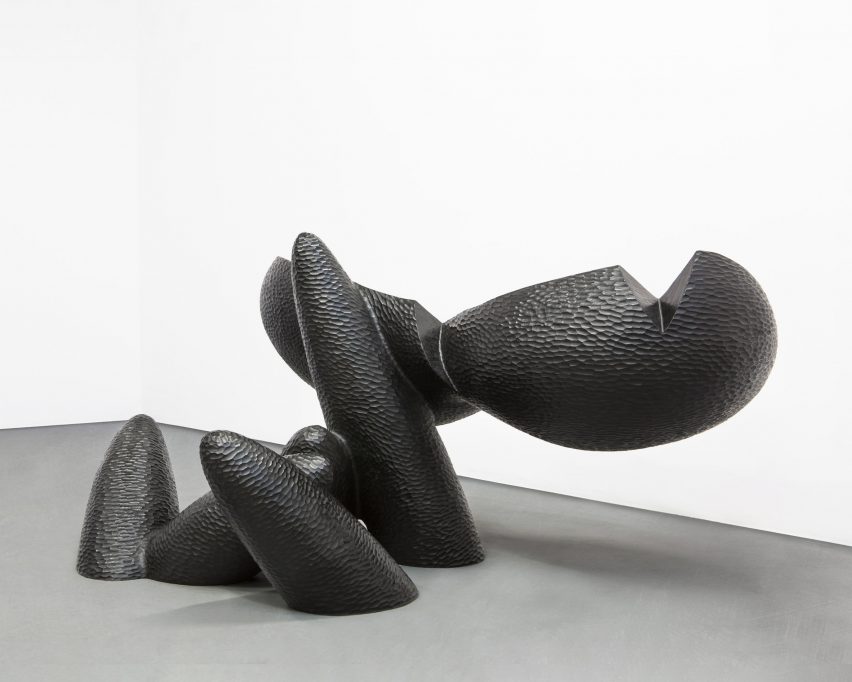
Le Gaillard founded the Carpenters Workshop Gallery with his childhood friend Julien Lombrail in 2006, starting in a literal carpenter's workshop in London's Mayfair.
The gallery specialises in functional art and collectible design and now has five galleries worldwide, including a new London space in Ladbroke Hall, Notting Hill.
Castle was interviewed by Dezeen in 2017, where he spoke about the "organic" vocabulary of his work. "Sometimes I think of it as actually growing from a seed/idea," he said.
The photography is by Benjamin Baccarani unless otherwise stated.
Wendell Castle: Suspended Disbelief is on at the Carpenters Workshop Gallery in London, UK, from 9 February to 27 April 2024. See Dezeen Events Guide for an up-to-date list of architecture and design events taking place around the world.